Dutch Garden Ideas: Charming Designs for Your Outdoor Oasis
Dutch gardens are admired around the world for their beauty and innovative design. From vibrant tulip fields to serene landscapes, Dutch gardening offers a lot to explore and enjoy.
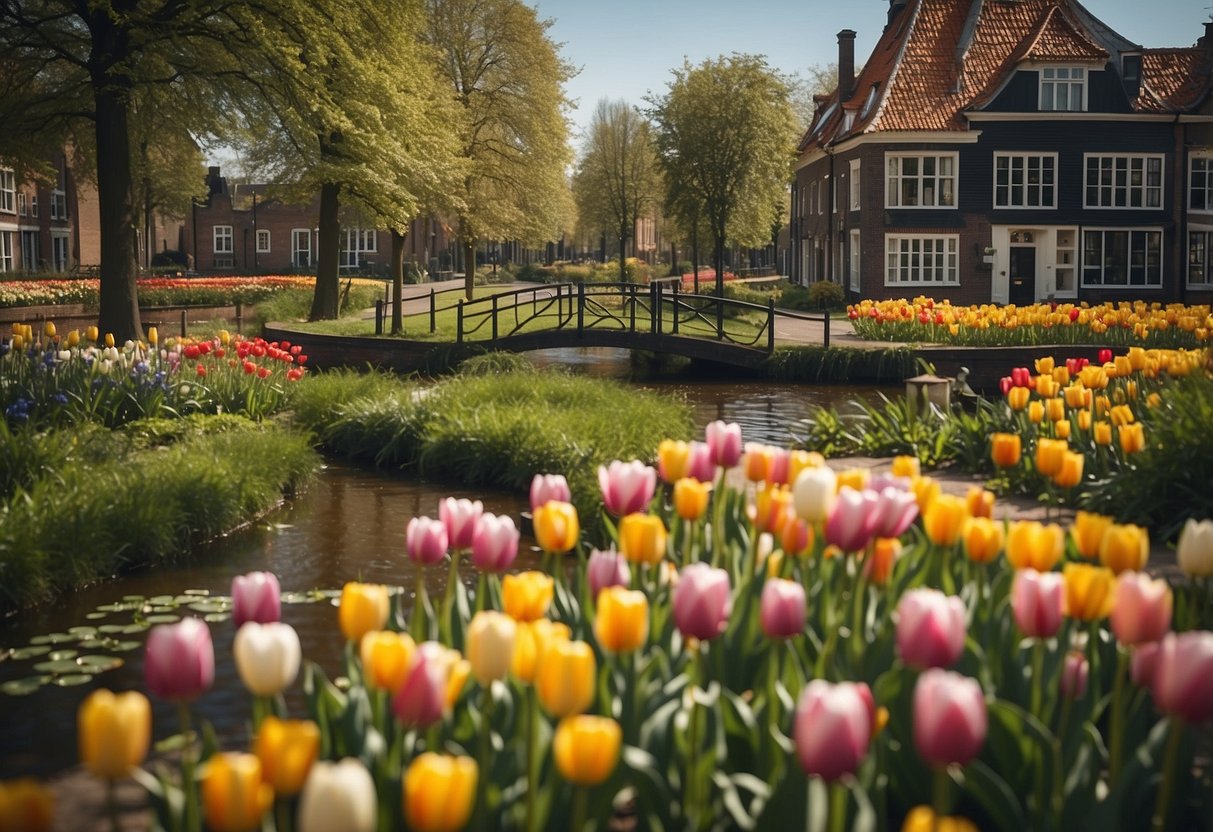
Are you looking to transform your own garden with ideas inspired by the Netherlands? Discover a variety of creative and practical tips that can help you bring a touch of Dutch elegance to your outdoor space.
1) Tulip Beds

Tulip beds can make your garden pop with color and life. You can plant tulips in neat rows or clusters for a fun mix.
Mix tulips with other flowers like daffodils or hyacinths to make your beds even more interesting. Make sure to use compost in the soil to provide the nutrients tulips need.
For ideas, explore different layouts and arrangements of tulip beds from sites like FreshPatio. This can help you visualize the perfect design for your garden.
2) Windmill Planter

A windmill planter can add charm and a touch of whimsy to your garden. It’s a creative way to combine plant display with a classic Dutch element.
You can find beautiful windmill planters on sites like Pinterest. These planters often feature a small windmill structure, perfect for showcasing your favorite flowers.
For a unique option, consider an upcycled windmill planter that adds a bit of history and character to your garden space.
3) Wooden Garden Bench
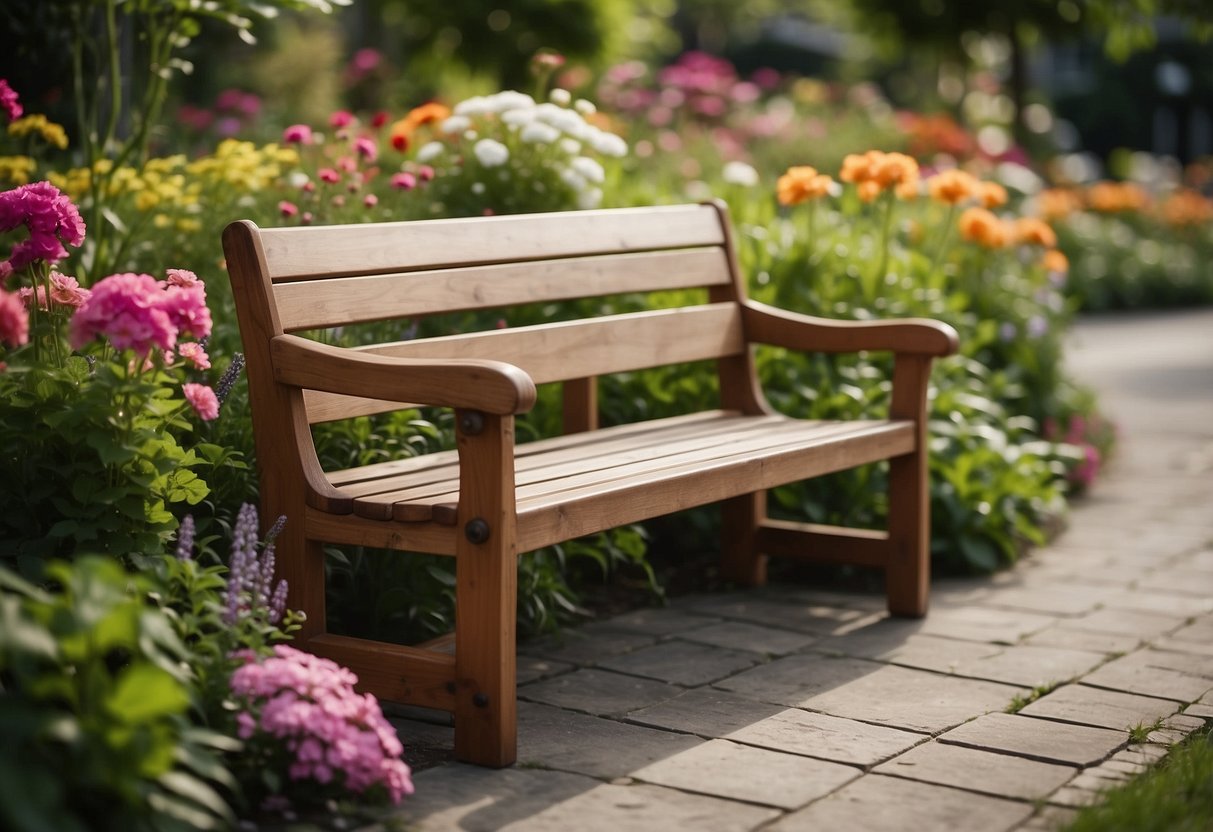
A wooden garden bench can add a touch of charm to your Dutch garden. Crafted from natural materials, it blends seamlessly with greenery and flowers.
You can place it along a pathway or near a flower bed. It provides a cozy spot to sit and enjoy your outdoor space.
Consider adding cushions for extra comfort. This simple addition makes your bench inviting and stylish. For ideas, check out these DIY garden bench plans. A well-placed bench can truly enhance your garden’s appeal.
4) Delft Blue Pottery

Adding Delft Blue Pottery to your garden can create a charming and unique touch. This pottery, also called Delftware, has a rich history dating back to the 16th century. Its iconic blue and white designs often depict Dutch landscapes and floral patterns.
Delft Blue Pottery pieces, such as vases or planters, can enhance your garden’s aesthetic. The contrast of blue and white pottery against green foliage is striking. You can even try painting your own Delft Blue pottery for a personal touch.
Incorporate Delft Blue tiles into garden paths or walls to add a classic European feel. This timeless pottery brings a piece of Dutch heritage to your garden.
5) Dutch-Style Garden Arch

A Dutch-style garden arch can add a charming focal point to your garden. It’s often made from simple materials like wood or metal.
These arches are typically adorned with climbing plants such as roses or clematis. The plants create a lush, natural canopy as they grow.
Placing the arch at the entrance or along a pathway enhances the garden’s visual appeal, inviting you to explore further. Adding this classic feature is a great way to bring a touch of Dutch garden design to your outdoor space. For more ideas, check out these Dutch garden tips.
6) Boxwood Hedge Maze

A boxwood hedge maze can be a charming addition to your garden. You’ll find it both fun and elegant. These hedges are easy to shape and maintain.
You can make the maze as simple or complex as you like. It’s a great way to entertain guests, especially children. Plus, it adds a unique feature to your garden.
Boxwoods are evergreen, so your maze will look good all year round. To keep it tidy, you only need to trim it occasionally. Enjoy walking through your lush, green labyrinth!
7) Amsterdamsche Chair
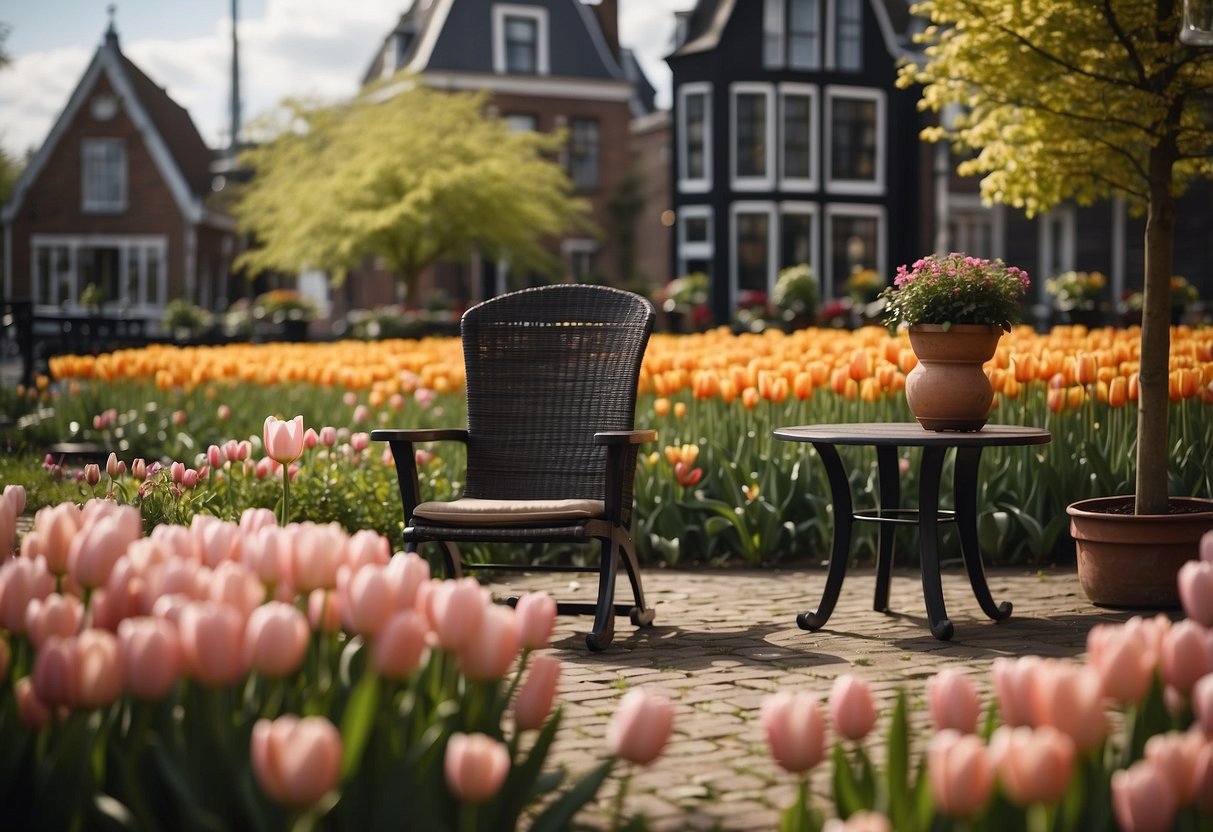
The Amsterdamsche Chair adds a touch of charm to any garden. It’s known for its simple, yet elegant design that reflects the essence of Dutch style.
You can place it near a flower bed or under a tree to create a cozy reading nook. Its sturdy construction ensures it can withstand outdoor conditions while offering comfortable seating.
Adding an Amsterdamsche Chair to your garden is a great way to bring a bit of Amsterdam’s relaxed vibe to your space. You can find more ideas on Dutch garden design here.
8) Bicycle Plant Stand
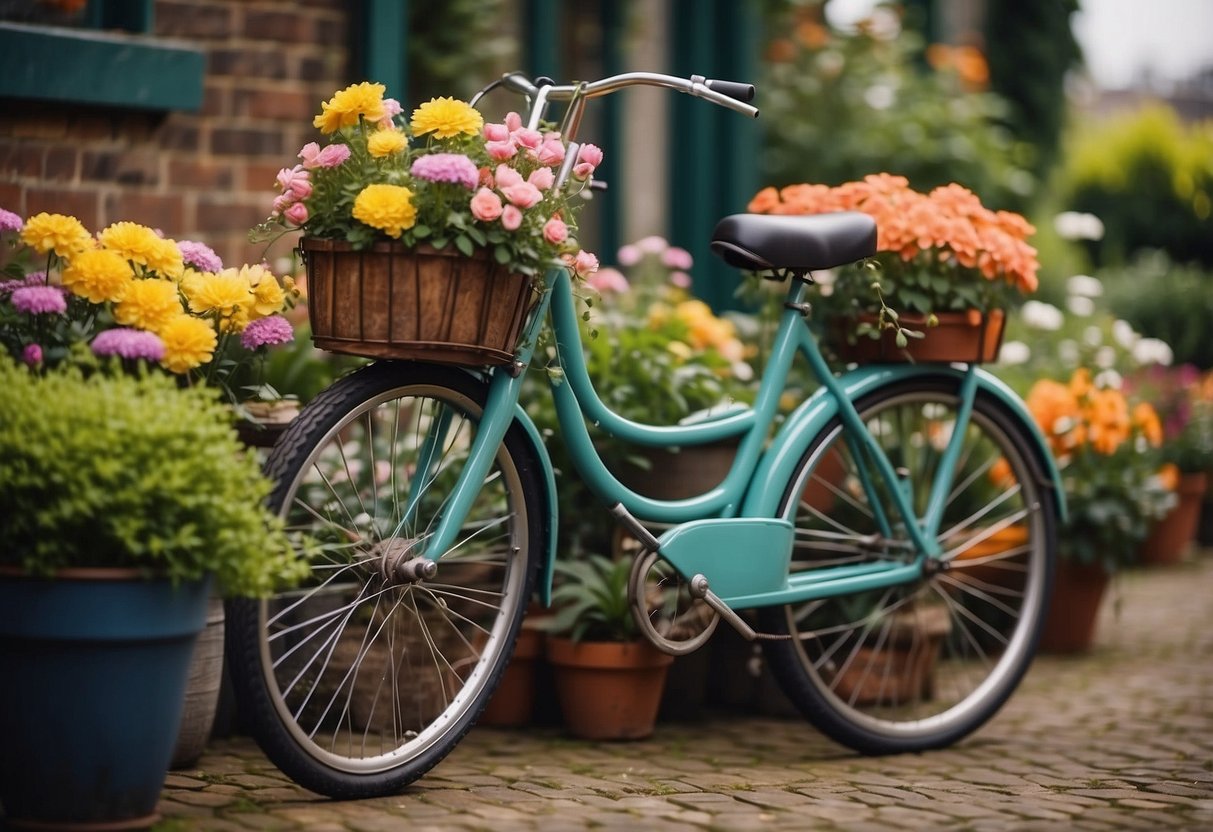
Transform an old bicycle into a unique plant stand for your Dutch garden. Paint the bike in a bright color to add a pop of vibrancy.
Attach baskets or boxes to the bike’s frame to hold your favorite flowers or trailing plants. Using a bicycle planter is a creative way to display your plants and add a whimsical touch.
Place the bike against a fence or stand it proudly in your garden for a charming focal point.
9) Ivy-Covered Pergola
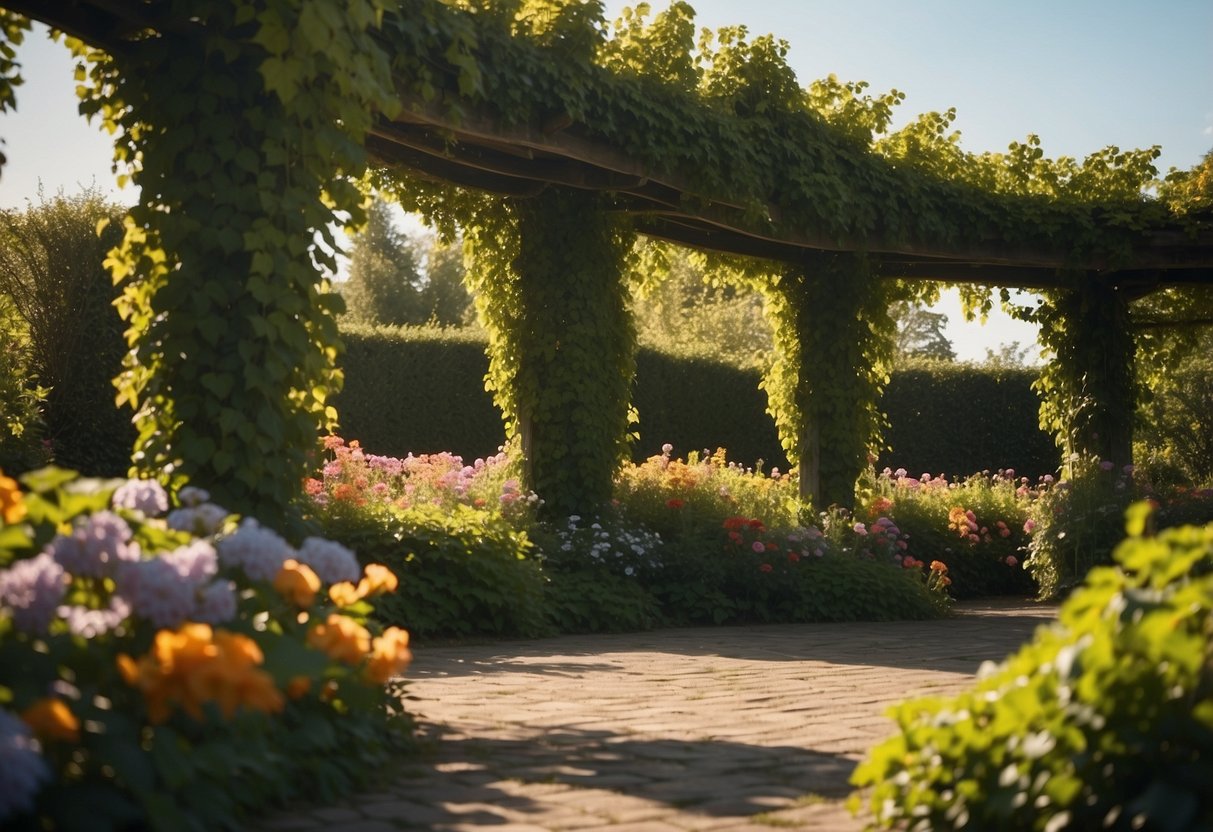
Imagine sitting under a beautiful pergola, shaded by a canopy of lush, green ivy. An ivy-covered pergola can transform your backyard into a serene, fairy-tale-like space.
Ivy grows quickly and provides a natural, leafy cover. It also adds an old-world charm to your garden. Just make sure to trim it regularly to keep it looking tidy.
For more ideas, you can explore these pergola inspirations and enhance your outdoor space further.
10) Canal Water Feature

Adding a canal water feature to your garden can create a peaceful and unique look. Inspired by the canals in Amsterdam, these water features provide a soothing sound and beautiful reflection.
You can line the canal with plants like iris and water lilies. These plants thrive in wet conditions and add color to your garden.
Consider adding small bridges or stepping stones over the canal. This makes your garden feel more interactive and interesting. A canal water feature can be an eye-catching addition to any yard.
Understanding Dutch Garden Design

Dutch garden design is known for its blend of historical formality and modern principles. It often includes geometric layouts, efficient use of space, and a mix of perennials and bulbs for year-round interest.
History and Evolution
Dutch gardens have roots in the 17th and 18th centuries, reflecting a time when the Netherlands led in trade and horticulture. These gardens were initially inspired by Italian and French formal gardens, characterized by symmetry and order. You would see clipped hedges, meticulously arranged flower beds, and water features. Over time, the focus shifted to reflect the changing tastes and limitations in modern urban spaces.
Rooftop gardens and dense plantings became popular as a response to limited land. This history has influenced modern Dutch gardens, which blend historical elements with contemporary touches, such as the use of modern materials and sustainable practices.
Key Characteristics
Dutch gardens are well-known for their structured yet natural look. One key feature is the use of geometric designs, often seen in the layout of garden beds and pathways. These designs help make efficient use of space, something crucial in densely populated areas.
You will often find a variety of plants that provide interest throughout the year. Piet Oudolf, a famous Dutch designer, emphasizes using perennials and grasses for their textures and shapes. Elements like seed pods and dried stems add architectural interest, even in winter. Additionally, the vibrant bulb plantings, especially tulips, are quintessentially Dutch, creating a colorful display each spring.
Plant Selection for Dutch Gardens
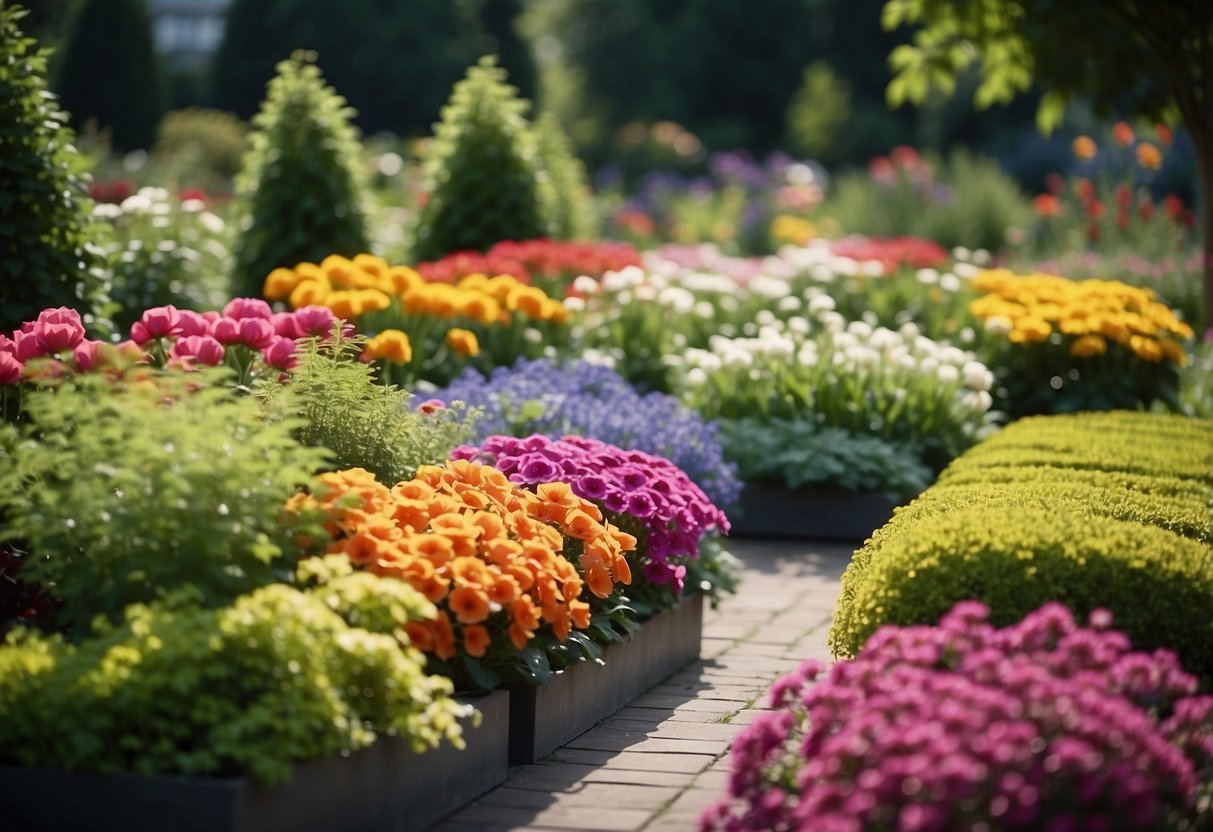
In Dutch gardens, you’ll want to focus on selecting plants that thrive in the Netherlands’ unique climate. This includes both native plants and a variety of flowering plants that add color and structure.
Native Plants
Choosing native plants is essential for creating a garden that is both beautiful and sustainable. Native plants are adapted to the local climate and soil, making them easier to care for and more resilient against pests. In the Netherlands, popular native plants include:
- Meadowsweet (Filipendula ulmaria): This plant loves moist soil and produces clusters of white flowers.
- Common Toadflax (Linaria vulgaris): Bright yellow flowers make this a standout choice.
- European Beech (Fagus sylvatica): This tree provides excellent structure and shade.
These plants not only enhance the aesthetic appeal but also support local wildlife. In particular, they offer essential habitats for pollinators like bees and butterflies.
Flowering Plants
Dutch gardens are renowned for their vibrant and diverse flowering plants. Some classic choices include:
- Tulips: These are iconic to Dutch gardening and come in a wide array of colors and shapes.
- Hyacinths: Known for their strong fragrance, hyacinths add both beauty and scent to your garden.
- Dutch Iris: These flowers provide a lovely splash of blue or purple, perfect for garden borders.
For a touch of tradition mixed with modern flair, consider combining these flowers with greenery. Plants like lavender pair well with boxwood, creating a structured yet colorful garden that appeals through various seasons.
Design Elements in Dutch Gardens
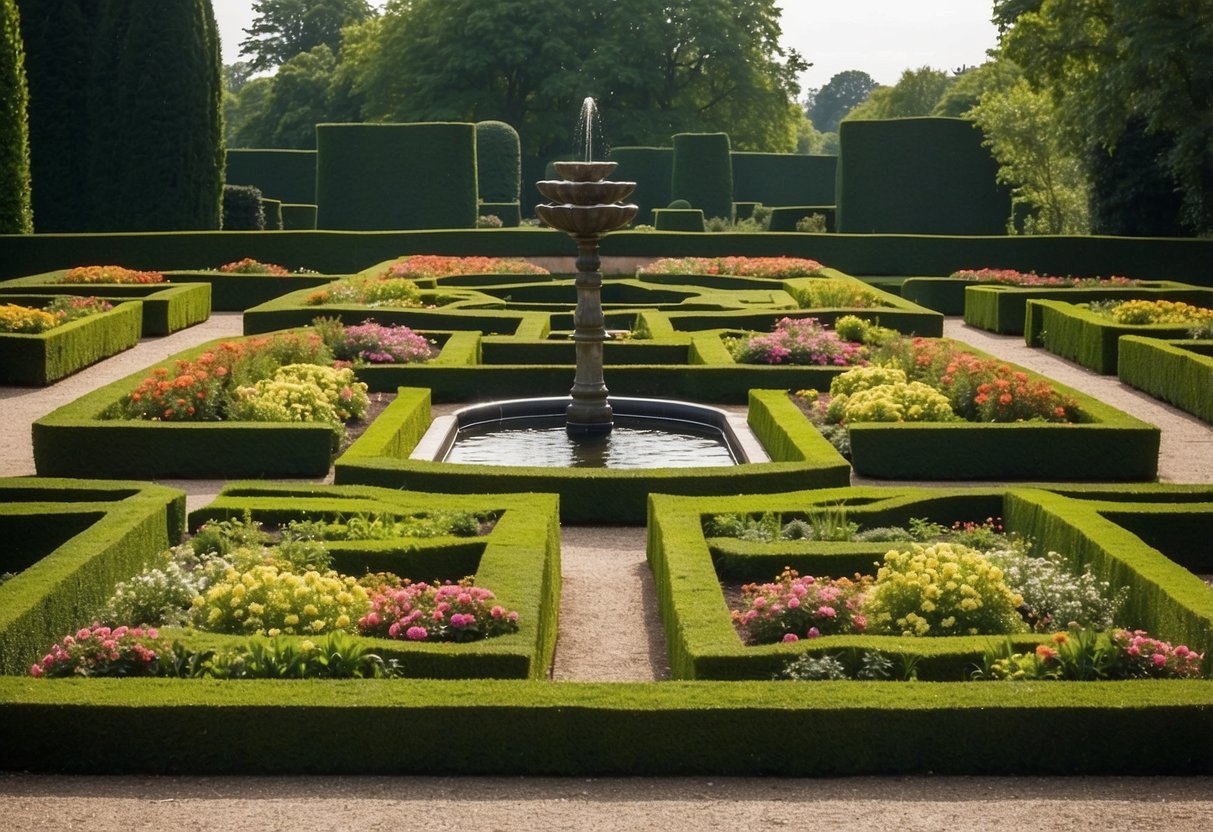
Dutch gardens are known for their balance, structure, and efficient use of space. These gardens often incorporate symmetry, calming water features, and well-designed pathways.
Symmetry and Order
One of the most notable features of Dutch gardens is their emphasis on symmetry and order. Gardens in the Netherlands often use geometric shapes and straight lines to create a sense of balance and harmony. Hedges, topiaries, and manicured lawns are common, forming neat, clean lines in the landscape.
Plants are arranged in a way that mirrors the overall structure, which helps in creating a cohesive look. Formal garden layouts, including boxwood hedges and parterres, are also prominent. This structured approach serves to highlight the beauty of individual plants while maintaining an ordered feel.
Water Features
Water features are a staple in Dutch garden design. They range from simple reflecting pools to elaborate fountains. Including a water element brings tranquility and a sense of calm to the space. These features also help reflect light, adding depth and dimension to the garden.
Canals or small ponds are often integrated into the gardens, reflecting the traditional waterways of the Netherlands. Adding water plants like lilies and reeds can enhance the natural feel. Fountains often act as focal points, drawing the eye and providing soothing background sounds.
Pathways and Walkways
Pathways and walkways in Dutch gardens are typically designed to guide visitors through the space with ease and elegance. These paths often use materials like brick, stone, or gravel, which add texture to the garden while maintaining a classic look.
Paths are usually straight or slightly curved to complement the geometric layout of the rest of the garden. Arches and pergolas can be used to frame the walkways, covered with climbing plants like wisteria or ivy for added visual interest. By creating defined paths, the garden becomes more accessible and enjoyable to stroll through.







